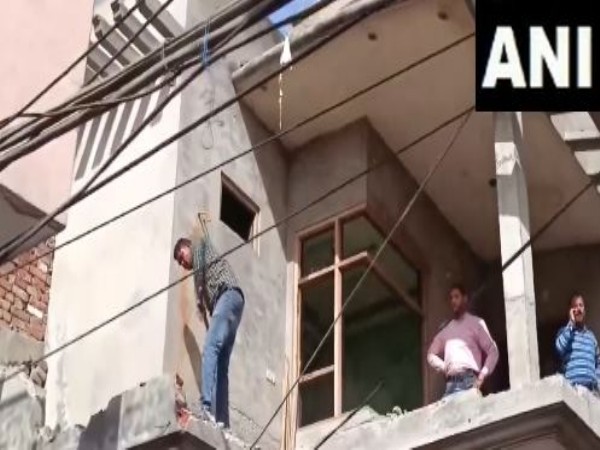Chembur's market to witness upward movement in prices: Cushman & Wakefield
May 28, 2024

PNN
Mumbai (Maharashtra) [India], May 28: Mumbai's real estate landscape has evolved significantly, driven by factors like population growth, infrastructure expansion, and governmental policies. The Cushman & Wakefield's report on Chembur, mentions this micro market having emerged as one of the most sought-after residential hubs in eastern Mumbai. Chembur's residential real estate market has evolved from a mid-end to a premium category. In 2023, Chembur witnessed 10% of the total supply among the eastern suburb markets and 27% supply among the adjoining markets (i.e., Chembur, Ghatkopar, Kurla, Vidyavihar, Deonar, Tilaknagar and Sion). Chembur has also recorded a significant price appreciation, resulting in narrowing of the pricing gap between the established markets like Bandra, Worli, Dadar, Mahalaxmi and Lower Parel.
The average sales trend in the micro market of Chembur witnessed 837 units in 2019 and rose to 1200 units in 2023. The property rate (carpet area) was around Rs 25,800 per sq. ft in 2021 and is expected to rise to Rs 38,500 in 2028.
Chembur has transformed due to infrastructure developments, boosting connectivity, and driving real estate demand. Its affordability compared to other areas, coupled with improved infrastructure, has made it attractive to homebuyers and investors alike.
Chembur's strong real estate market, characterized by consistent supply and rising prices, has not only solidified its position but also spurred growth in neighboring areas. The launch of approximately 5,600 units in 2020 and 2021 by renowned developers has bolstered market dynamics. Due to its strategic location, Chembur has become a focal point for growth in the eastern region, driving development in adjacent micro-markets like Kurla, Tilak Nagar, Nehru Nagar.
Connectivity:
Chembur's strategic location ensures excellent connectivity to key business districts like BKC, Lower Parel, Nariman Point, Andheri, Powai, and Vikhroli. Infrastructure initiatives like the Eastern Express Highway, BKC Connector, and Santacruz-Chembur Link Road have further enhanced this connectivity. Additionally, Chembur is well-connected to major industrial hubs, transportation nodes, and ports. Ongoing and completed projects such as Mumbai Metro Lines and MTHL project have improved connectivity to Navi Mumbai and within Mumbai as well.
Existing Infrastructure:
Chembur benefits from excellent infrastructure, significantly improving its accessibility to other parts of Mumbai. The Eastern Freeway, Monorail, BKC Connector, Ghatkopar-Mankhurd Link Road, and Santacruz Chembur Link Road has drastically reduced travel time in Mumbai. They provide swift access to South Mumbai, central, western and eastern suburbs and BKC, cutting commute time significantly. Additionally, the proximity of Chhatrapati Shivaji Maharaj International Airport within a 12 km radius boosts residential demand in nearby areas like Chembur.
Impact of Infrastructure Developments on the Real Estate Growth
The Santacruz Chembur Link Road (SCLR) played a vital role in connecting the eastern corridor with the western suburban markets, boosting residential development in Chembur, Kurla, Ghatkopar, and Sion. Completion of major projects like the Monorail, Eastern Freeway, and SCLR significantly enhanced connectivity to central and southern Mumbai, driving consumer interest and spurring residential redevelopment. Initiatives such as the BKC Chunabhatti corridor, Metro lines, GMLR, and MTHL further reduced travel time to key hubs, accelerating redevelopment. Proposed metro lines in Chembur and neighboring areas are also increasing property prices, making the area more appealing for residential investment.
Ease of connectivity within MMR via multiple Metro routes and other modes of transport are expected to drive an upward movement in prices. Upcoming Metro lines 4, 2B and 8 will improve Chembur's connectivity to other parts of Mumbai and Navi Mumbai.
Metro Line 8 will connect Mumbai International Airport to the Navi Mumbai International Airport. This will allow commuters from Chembur easy access to both the international airports. Metro Line 2B will connect DN Nagar to Mankhurd allowing direct connectivity to BKC and extended western suburbs of Mumbai. Metro line 4 will connect Wadala to Kasarvadavali, improving connectivity to eastern suburbs. This will help ease congestion on the LBS, Eastern Express Highway and Central railway.
Several innovative transportation projects are underway in Mumbai:
1. Pod Taxi: An 8.8 km service connecting Bandra Railway Station, BKC, and Kurla Railway Station with 38 stations along the route.
2. Water Taxi: Ferries planned for four routes including Gateway of India to Belapur jetty, with future phases extending to JNPT, Elephanta Island, and Mandwa.
3. Worli Sewri Elevated Connector (SWEC): A 4.5 km access-controlled urban highway linking Worli & Parel with Sewri, slated for completion by early 2025.
4. Mumbai Travelator: An automated conveyor belt-like system to transport commuters between the Sant Gadge Maharaj Chowk monorail station and Mahalaxmi railway station, expected to be operational by February 2024.
Social Infrastructure
Chembur boasts of top-tier educational institutions such as JBCN International School, Ryan International School, and St. Sebastian High School. Renowned healthcare facilities like Zen Multi Speciality Hospital, Surana Sethia Hospital, Sushrut Hospital serve the community. Additionally, the area features prominent retail destinations like JIO World Drive, R City Mall, and Cubic Mall, providing residents with diverse shopping options.
Club Landscape:
Chembur proudly hosts Mumbai's largest golf course, the Bombay Presidency Golf Club. Situated at the heart of Chembur, it stands as one of the city's most prestigious and expansive 18-hole golf clubs, sprawling across 90 acres of lush greenery.
Demographics
Chembur's vibrant trading community and thriving population have fostered a self-sustaining ecosystem. With a majority of the working population (51%) aged between 25-59 being the prime demographic for homebuyers the area sees substantial demand for residential properties. Additionally, the significant presence of students and university-goers (35% of the population) and a high proportion of households (40%) with incomes exceeding 10 lakh indicate potential demand for mid to high-end residential developments. Moreover, a notable 3% of households boast incomes exceeding 1 crore, reflecting a trend consistent with Mumbai's overall demographic distribution.
(ADVERTORIAL DISCLAIMER: The above press release has been provided by PNN. ANI will not be responsible in any way for the content of the same)




















